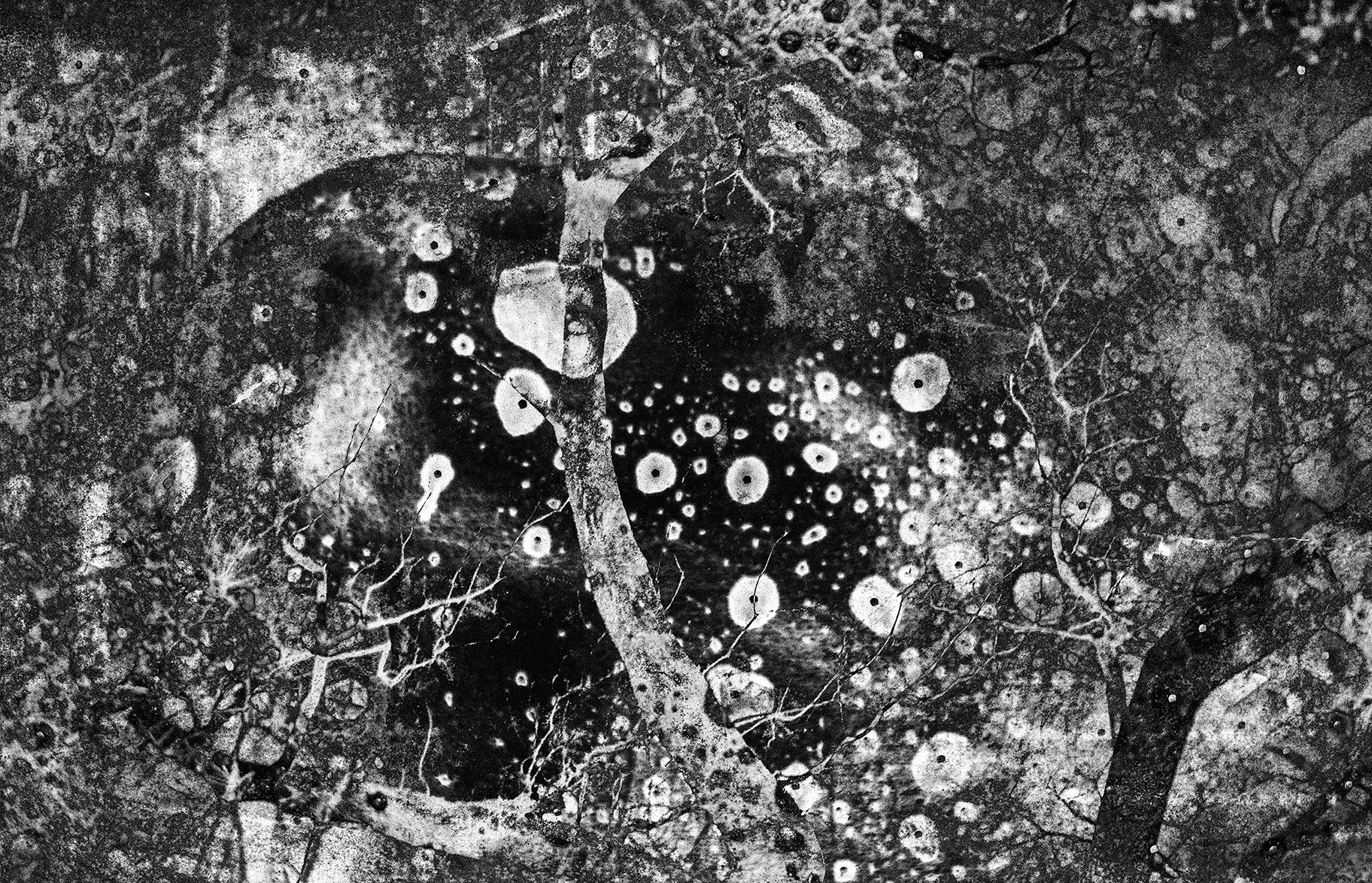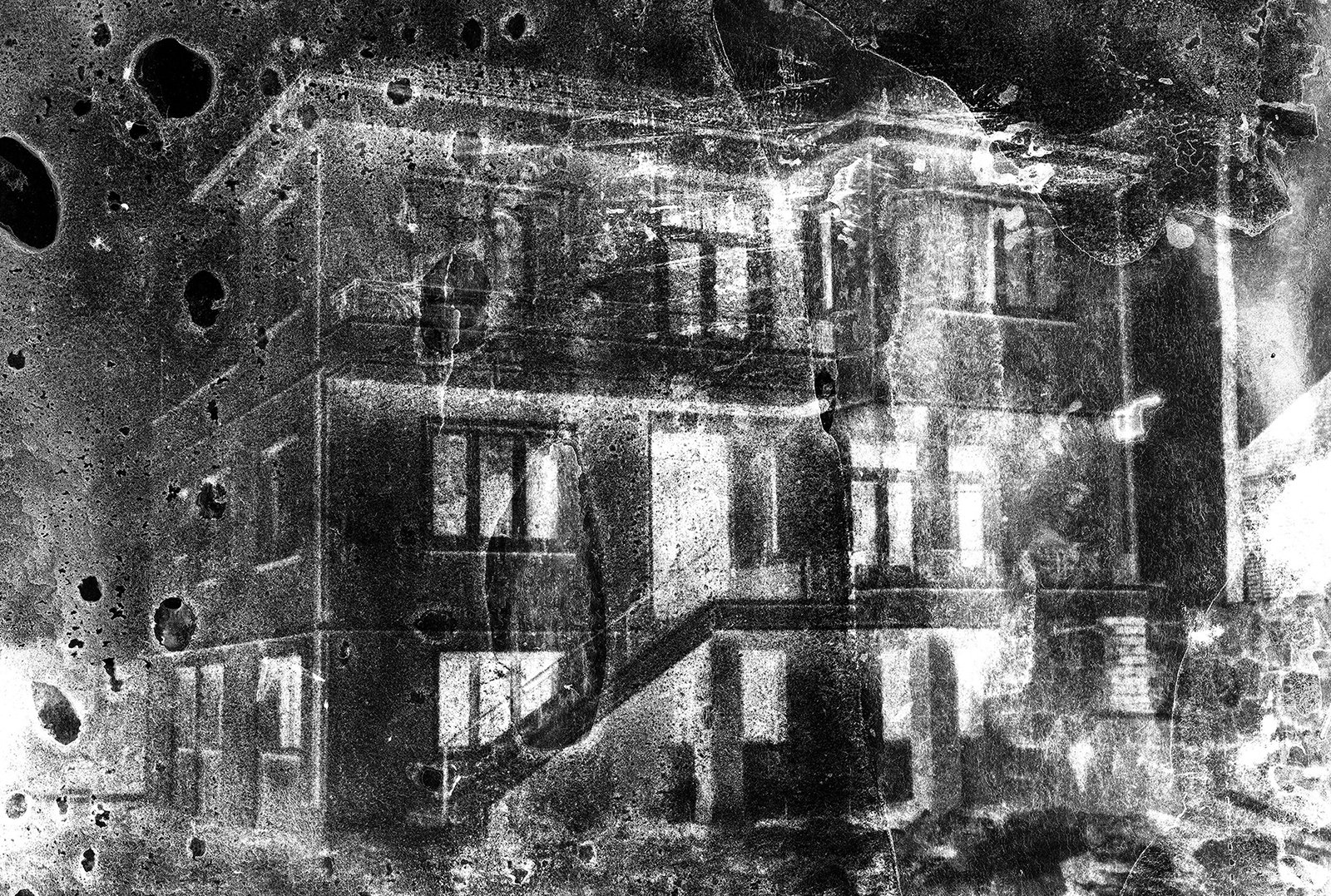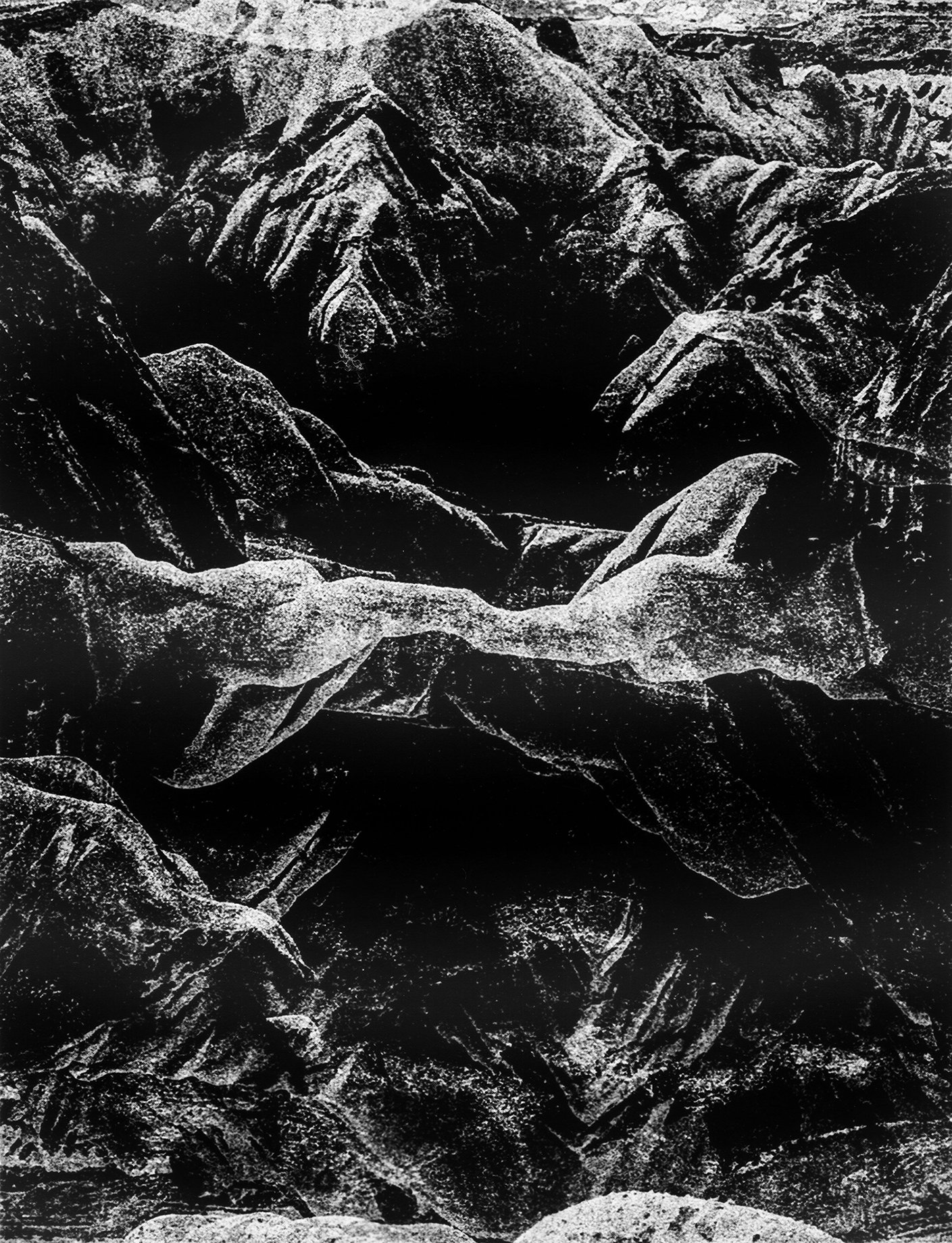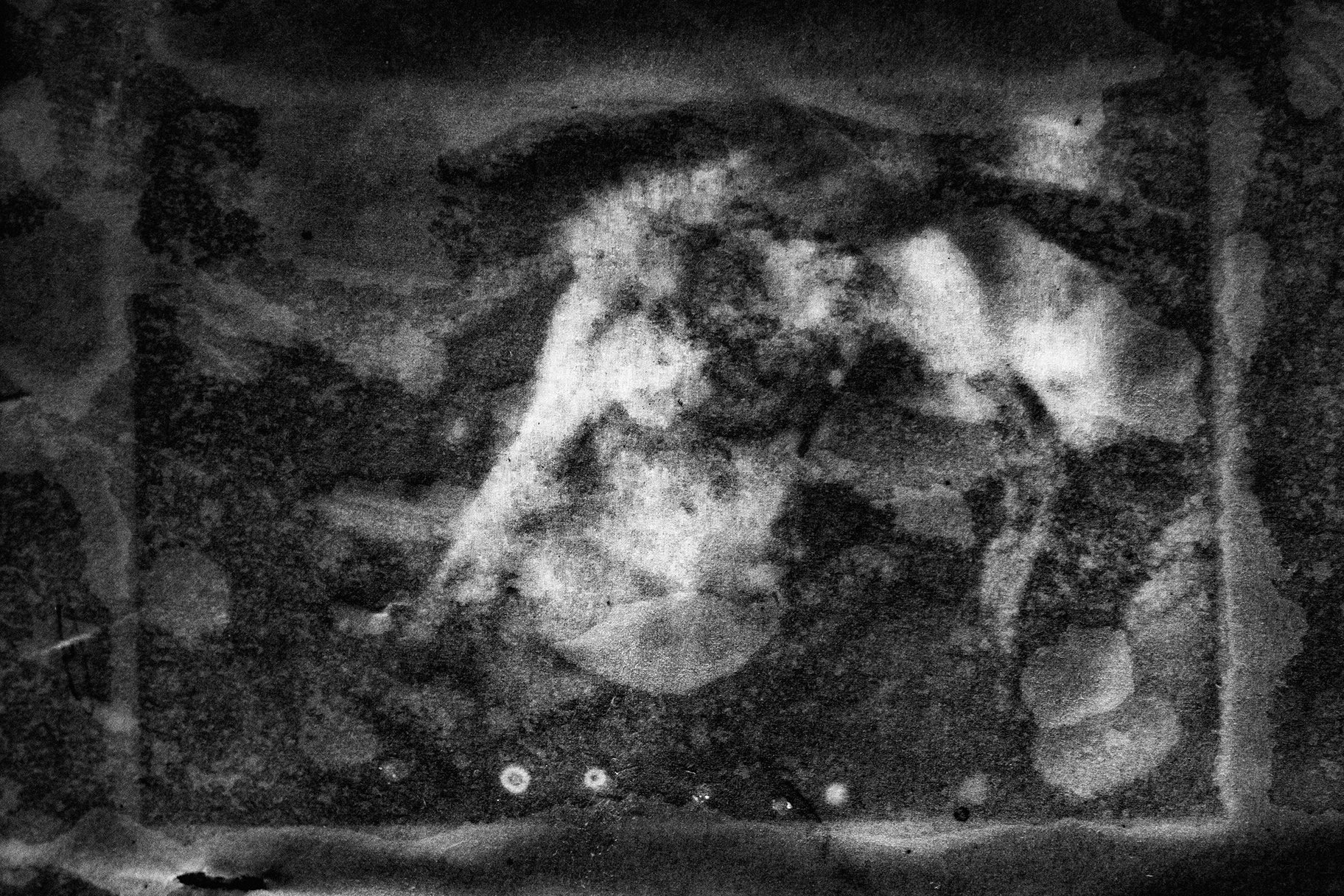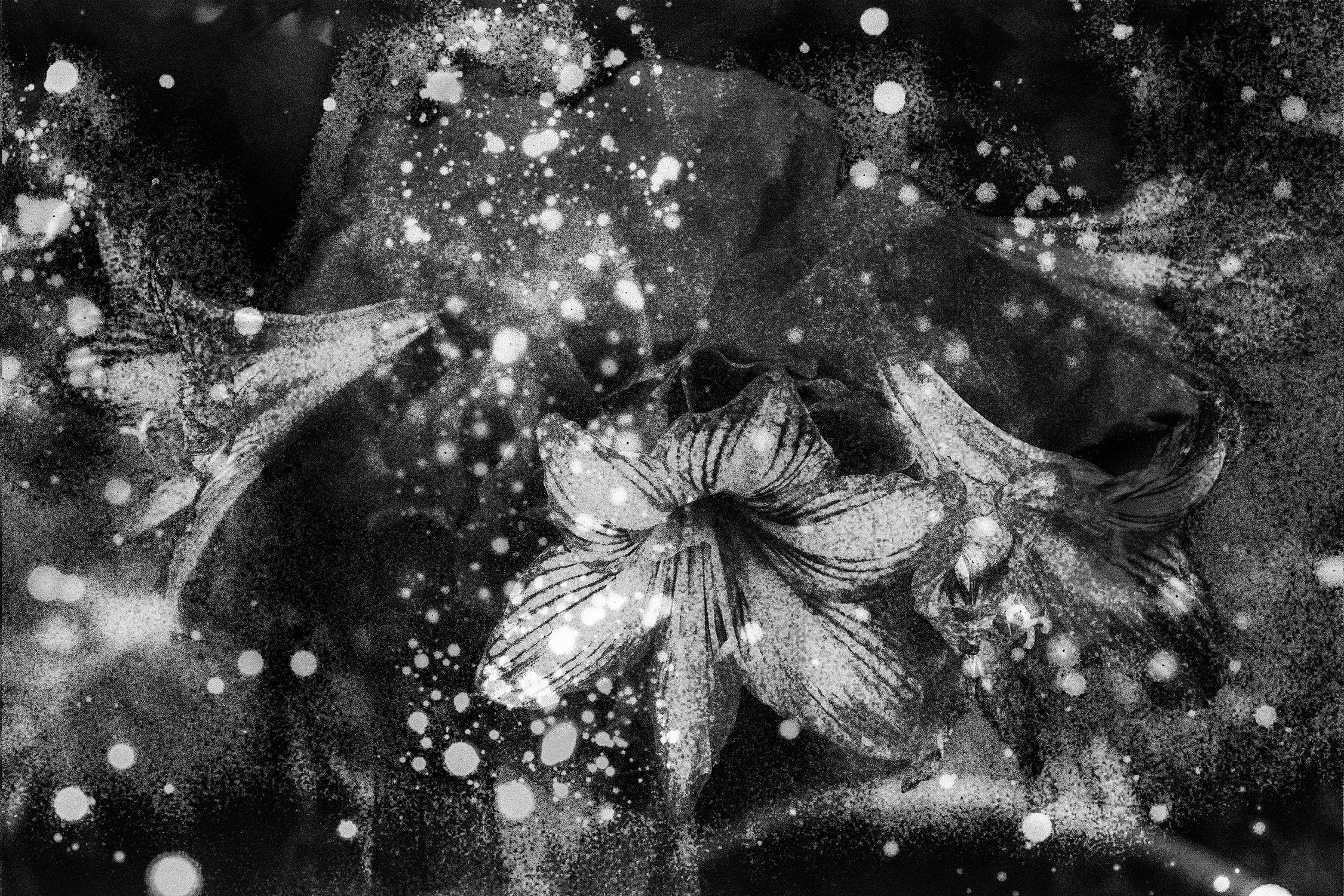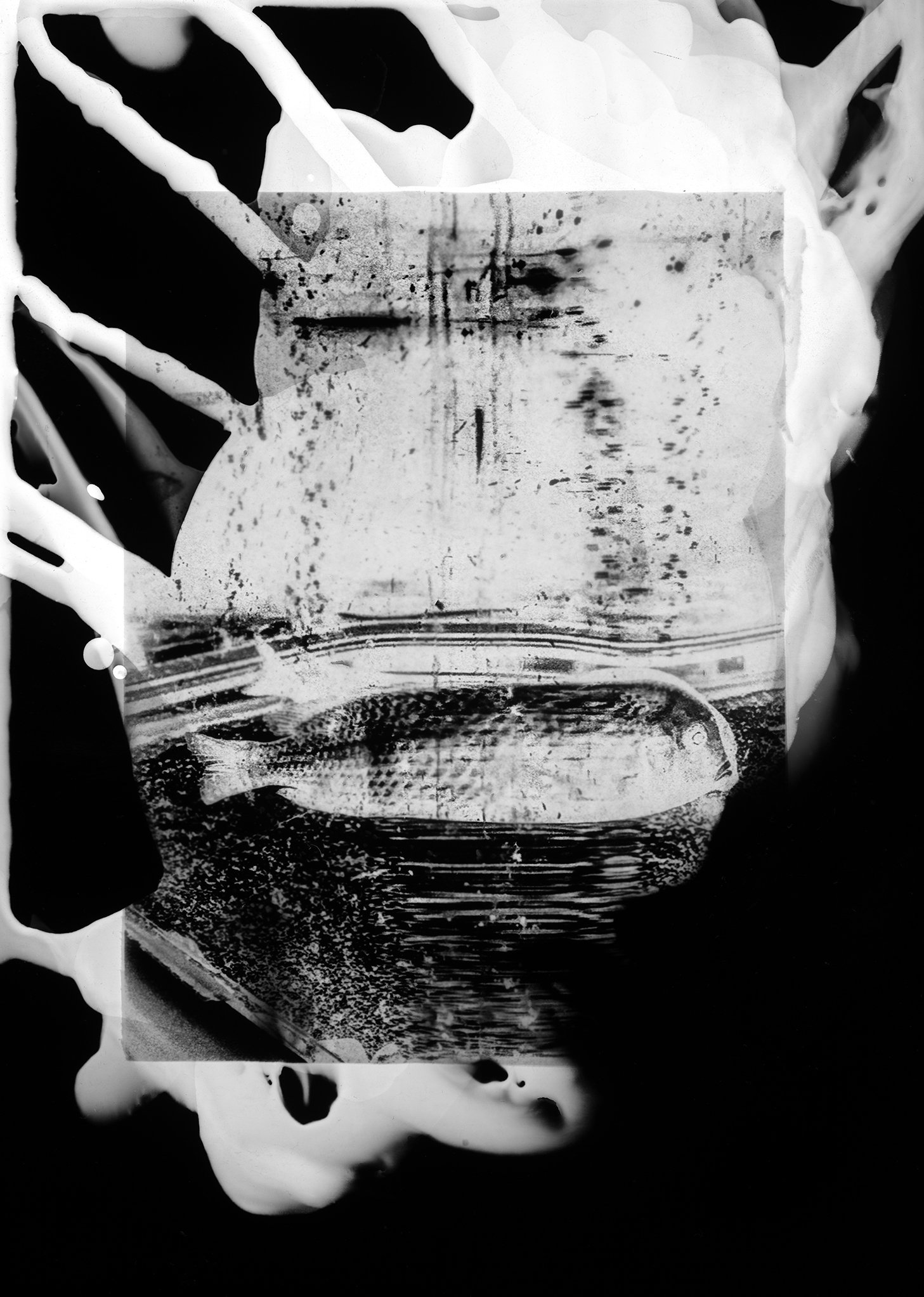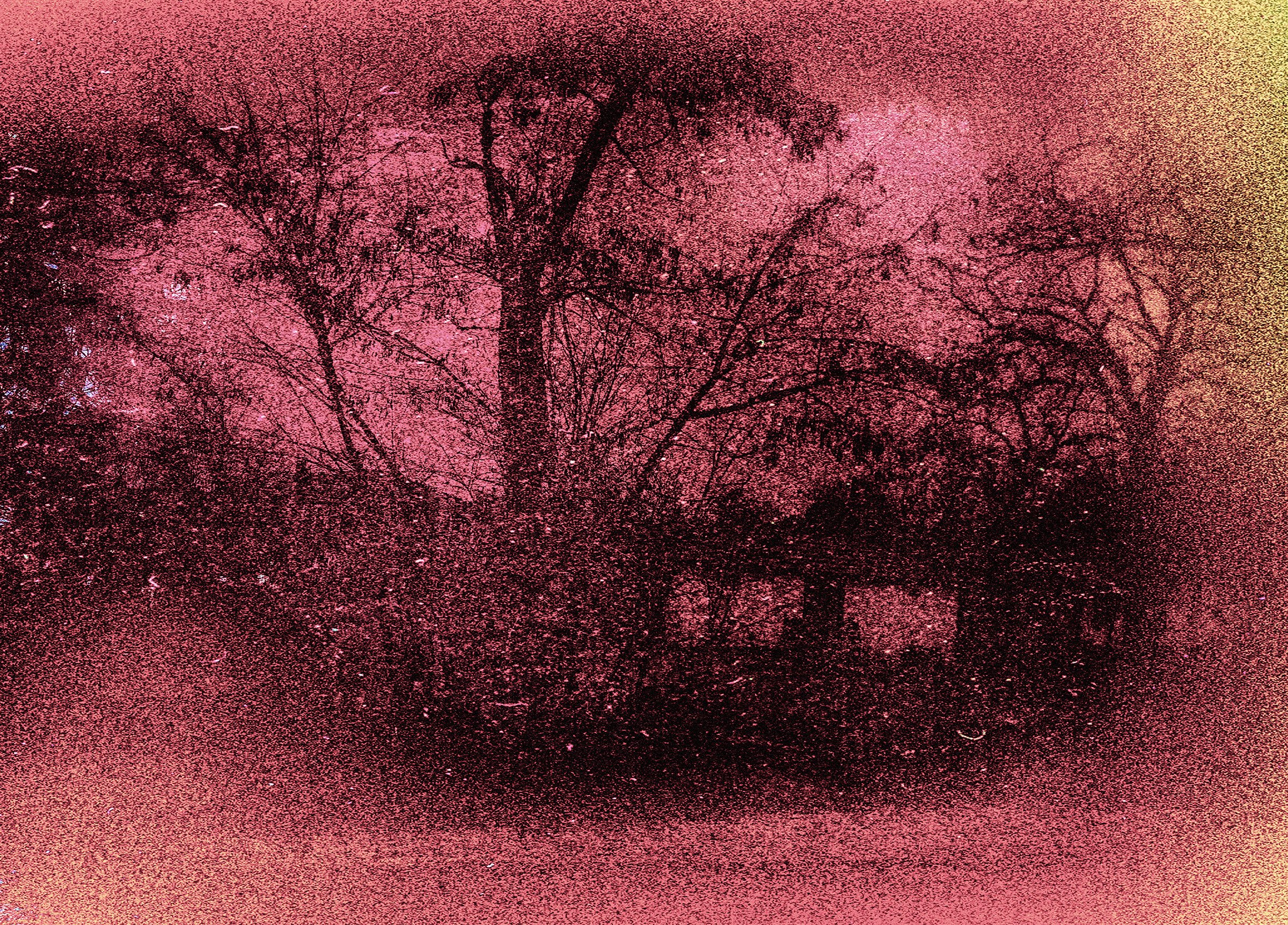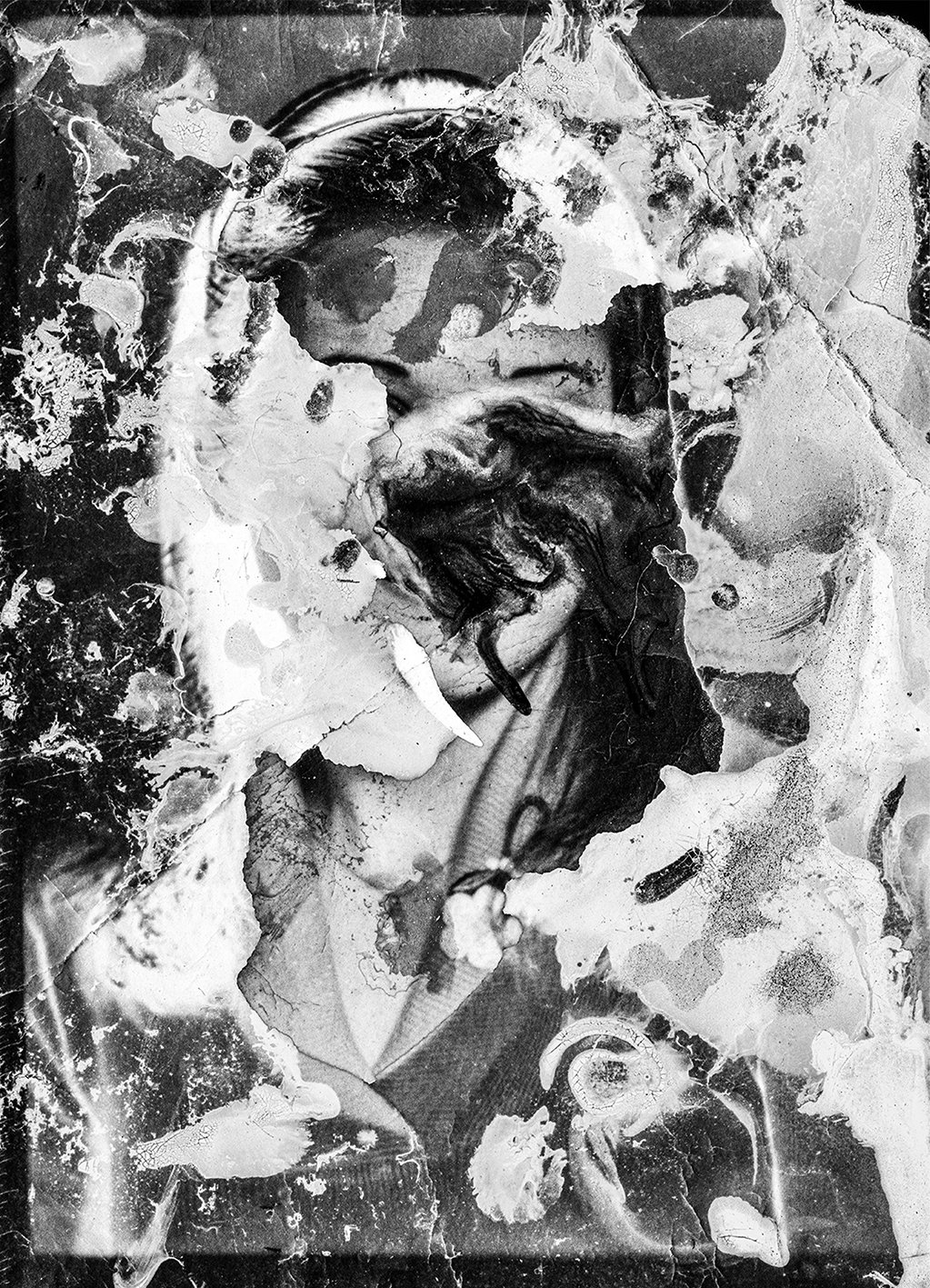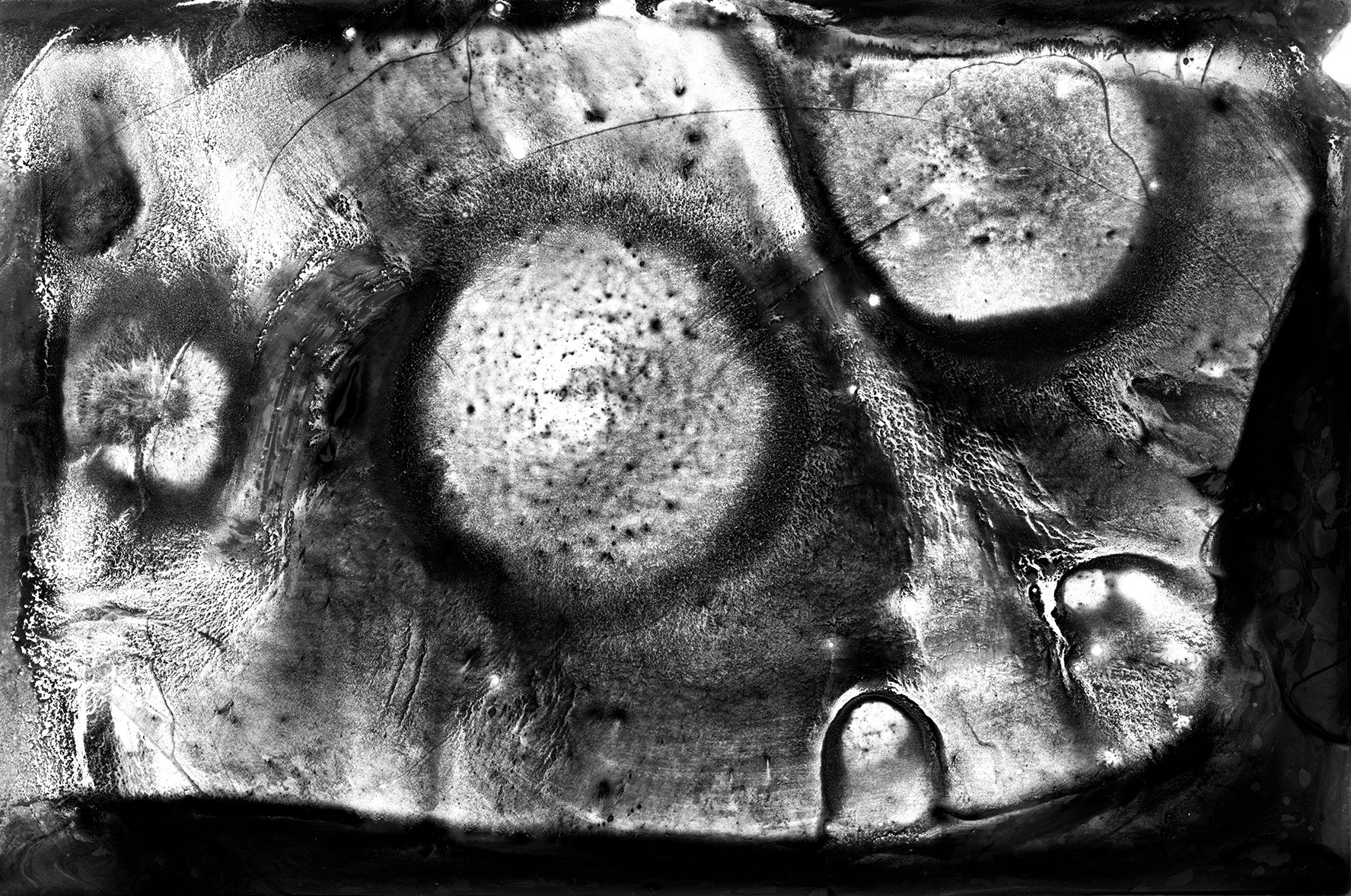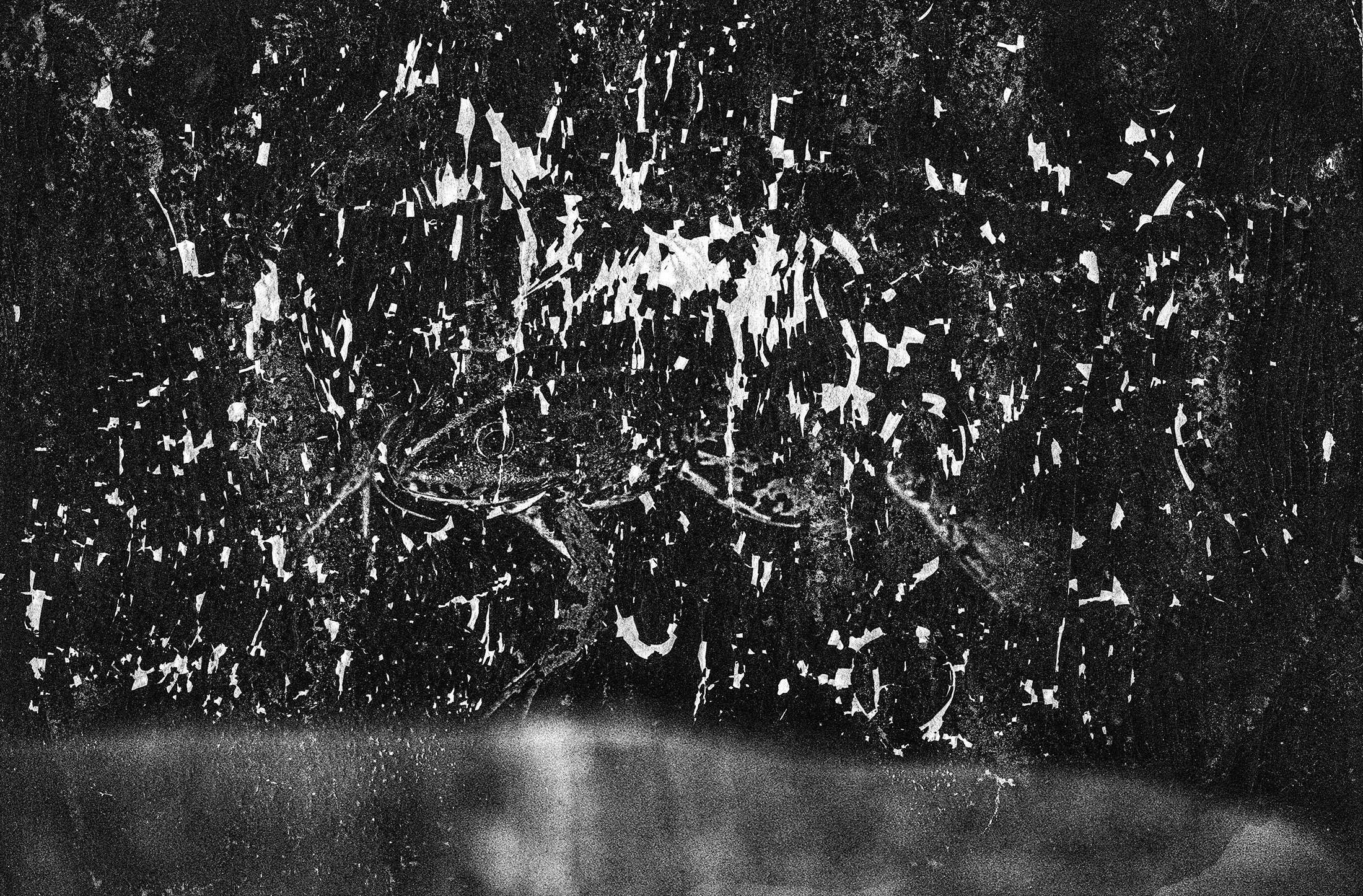There Is No Being On Earth That Has Time - Umut Erbas
Umut Erbas (1991, Turkey) deconstructs photographs, the symbols of reality and the visible world, through the use of external interference. While these transformations give way to departed remaining traces or new images, this process is concerned with demonstrating how everything, including the mind, is variational, lacerable, multilayered, and mortal. In his recent works supported by found photographs, the artist creates new narratives by representing various issues that include social memory and traumas, the phenomenon of forgetting/remembering, stacks of images, fears, historiography, sublimes of nature, and multiple realities. The artist’s production utilizes techniques such as cyanotype, darkroom, various surgical manipulations, and digital manipulations and offers a transition into dream-like, fantastic, eerie, and complex forms. He recently started creating works that support photography with video art, site-specific installations, interactive elements, and texts.
Past always remains available for us. It exists in our body in a form of memories towards which we can reach out. If let in peace it forms a solid foundation for our growth. Subconsciously our minds experience time as multilayered from our dreams, fears, thoughts, and images. Erbass’s imagery confronts emotions that were left discarded, as a result creating new narratives. For Fresh Eyes 2022 Erbass presented his project There Is No Being On Earth That Has Time where he experimented with the experience of time. The images weave in different interpretations of reality, such as dreams, nightmares, or imagination. The film aesthetics appear as composed of densely layered substances. To achieve this effect, Erbass subjected photographs to various techniques such as paint, chemicals, darkroom, digital interventions, or overlapping exposures. There Is No Being On Earth That Has Time emphasizes black and white tones with few exceptions of colour. Using this take sets a mysterious atmosphere for the entire series.
Some of the photographs enable the viewer to decipher what setting is depicted. Such as an image depicting a home or a white petal flower. Others are abstract leaving the viewer wondering about the meanings behind their visual riddles. Shapes in each image differ from symmetric to asymmetric. This technique appears as if Umut Erbass was studying the notion of time under the microscope. Visual elements change their placement and shape in the frames which hints at creating a story. An abstract story that binds past, present, and future. The photographer elaborates that his approach “mimics the attitude of a collector.” Umut Erbass, as a collector of different temporal experiences, intervenes with its structure. To achieve this effect, Erbass uses the so-called soup method. The method treats the film material as a product in a culinary recipe. Firstly, one needs to put an analogue film in boiling water and then add preferable ingredients, such as salt, lemon juice, or dish soap. Subjugating the film to diverse chemical substances alters its original material which becomes apparent during the developing process. Erbass’s experimentation enables the viewer to visualize the texture of time, presenting the notion as a shapeshifter- sometimes rough, sometimes smooth, always in motion.

